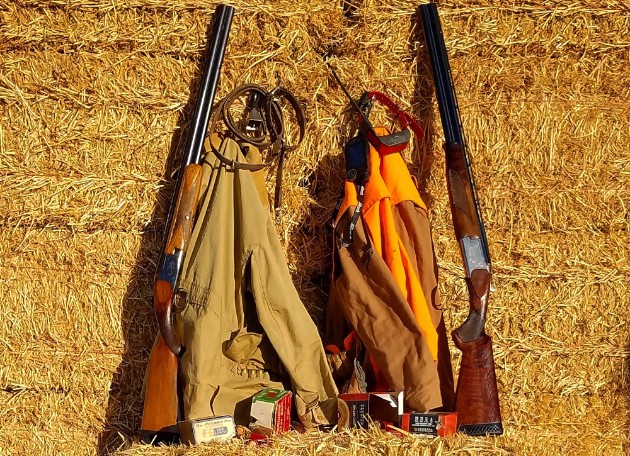Many of us have heard our grandfathers tell hunting stories about the good old days. I remember as a small child sitting at the foot of my grandpa’s recliner and looking up at him through a cloud of cigarette smoke while he talked about hunting trips from the past. There was almost always a black-and-white WWII movie on the TV with the volume turned up way too loud. I could see the reflection of the program clearly in the smoky lenses of his thick, black-rimmed glasses while he talked. I loved to hear him talk.
I can’t remember my grandfather ever going hunting in my lifetime. I can’t be sure why he gave it up, but I would give about anything to have gone hunting with him just one time. He died of colon cancer when I was 15 years old, but the stories he told echo in my mind when I am in the field to this day. The distorted memories include tales of long seasons and large bag limits in open spaces over a brilliant little pointer named Peppy. A lot has changed in our society since my grandfather’s time. I can’t help but wonder if the hunting was really that much better than it is today.
Recently research for a book I am working on sent me on a journey back to 1955. I spent days and weeks researching what everyday life was like in rural Idaho at that time. For my project, I also needed to know as much about what bird hunting would have been like back then. I expected to find stories of simple regulations, large bag limits, great dogs, and long seasons. I read old issues of Outdoor Life, interviewed half a dozen people—most of whom were teenagers during that time—and was very fortunate to get my hands on several Idaho Upland Bird Seasons and Regulations guides, including one for the year 1955.
As expected, the rules do look simple compared to today, but much to my surprise, season length, limits, or both were much more restrictive and, in some cases, complicated at that time. Both sage grouse and sharp-tailed grouse were closed to hunting that year. Today we enjoy a 31-day sharp-tailed season that is open in 14 counties for the entire month of October with a two-bird bag limit and six-bird possession limit. Last year sage grouse season was seven days with a one-bird bag limit and two-bird possession limit, and it was open in 23 counties.
There is quite a difference in season length for pheasants between then and now, too. Back then they were experimenting with three different strains of the bird in an attempt to figure out what variety would do best in Idaho. A hunter could harvest Chinese, Mongolian, or melanistic mutant pheasants. The hunt was broken into five geographical areas with different season dates that ran from 15 to 30 days depending on the area. The bag limit and possession limit were the same: three cock birds. The 2017 Idaho pheasant season will be broken into three areas and seasons that range from 41 days to 79 days with a daily bag limit of three cock birds and a possession limit of nine.
Partridge seasons are also much more liberal now. In 1955 the Hungarian partridge season was broken into four areas, with seasons ranging from 16 to 37 days with a five-bird bag and possession limit. Chukar season was only open in eight counties that were divided into three areas. The shortest season was only two days; the longest was 30 days, all with a three-bird bag and possession limit. In contrast, the 2017 statewide chukar and Hungarian seasons are both 138 days. The bag limit is eight each, and you are allowed 24 of each in your possession. I wonder what Grandpa would think about that.
This type of comparison is across the board for quail, blue grouse, ruffed grouse, spruce grouse, and even mourning doves, the biggest difference being in possession limits and length of season. The entire 1955 proclamation took only two pages of a PDF file. There are simple rules about shooting from a motor vehicle, across a highway, possession, transporting, and methods of take. There was no mention of private land or trespassing laws. It should be noted that between here and there gamebird populations in Idaho peaked. They say the ’60s were the real glory days.
It is my impression that in 1955 land access would have probably been quite a bit better. From my interviews, it looks as though most people probably hunted birds much closer to home back then. Today most of us travel some distance, often out of necessity, but we are aided by improved vehicles and modernized highway and interstate systems. We are the beneficiaries of improved game management practices and a better overall understanding of upland birds in general. We are a better informed group, with information at our fingertips that the greatest generation couldn’t even imagine.
Today we are blessed to have longer seasons than our grandfathers did to lose ourselves in a breathtaking landscape with a dog running out front in search of gamebirds. We have liberal bag limits and possession limits that allow us to go on three-day hunting trips and legally take birds every day. In good years we find an abundance of game if we put in the effort, but are these really “the good old days?”
Watch for part two of this synopsis, where we will look at the changes in the cost of bird hunting and the differences in equipment used for bird hunting in Idaho between 1955 and 2017.

